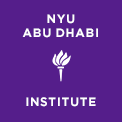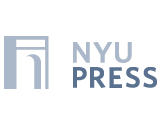 Patrick DeBrosse, a PhD student in History at Fordham University, writes about his experience teaching withʿAntarah ibn Shaddād’s War Songs in his course “HIST 1300: Understanding Historical Change – Medieval Europe.” This article expands on some of the ideas he shared on Twitter here.
Patrick DeBrosse, a PhD student in History at Fordham University, writes about his experience teaching withʿAntarah ibn Shaddād’s War Songs in his course “HIST 1300: Understanding Historical Change – Medieval Europe.” This article expands on some of the ideas he shared on Twitter here.
One of the challenges of teaching a survey history class for the first time is the task of finding the right primary sources to assign to your students. You want to choose authors whose voices reveal the complexities of a historical period, but who also strike a balance between approachable and mysterious. Your students must, in short, enjoy the challenge of reading the primary source, and walk away with more questions than they had when they began.
As a graduate student preparing for my first semester of teaching the history of medieval Europe, I had to think long and hard about the best primary source options available for each class topic. The part of the course that gave me the most pause was the week where I stepped away from Europe to teach the early history of Islam. I decided that covering the beliefs of Muhammad and his followers, the creation of the caliphates, and the flourishing of culture in Abbasid Baghdad would help my class reflect upon the general perspective of our course, as well as upon the similarities of (and connections between) “the West” and “the Islamic World.”
Experts on what is increasingly being referred to as the Global Middle Ages have pointed out that teachers who focus exclusively on Europe in their classes leave their students with a sense of empathy for medieval Europeans, but with a hostile and distorted view of non-Europeans. Such an outcome is tragic in and of itself, while also being exclusionary for students from minority backgrounds who might otherwise found medieval studies attractive. That outcome is also dangerous for society—since white supremacists often use distorted images of the Middle Ages in their propaganda. Many medieval historians now recognize the need to devote time and attention to people who lived outside of Europe—the urgency of which is reflected in the fact that the Medieval Academy of America dedicated this year’s conference to the Global Middle Ages. But what, then, to give the students as a primary source? My own research focuses on the crusades, and although I find the Islamic accounts of that period fascinating and moving, I did not want to introduce the students to Islam through the lens of holy war. As my advisor has often warned me, such an introduction to Islam feeds straight into discredited models of “a clash of civilizations” between East and West. Much better to find a source that lets the students see the Islamic world on its own terms.
It was serendipity that led me to the War Songs of ʿAntarah ibn Shaddād, a pre-Islamic warrior poet. I had recently begun following the Library of Arabic Literature on Twitter when I saw their post about a new English translation of ʿAntarah’s poetry. The description intrigued me, and I was even more interested after I listened to a BBC In Our Time episode that interviewed the translator, James E. Montgomery, alongside other experts on ʿAntarah. When I picked up a copy of the book, one of the things that stood out to me was the way that the poetry linked different periods of Islamic history. ʿAntarah himself was a pre-Islamic warrior, so the attitudes and beliefs he expresses in his poetry provide a tremendously useful introduction to Arabia that helps put Muhammad’s teaching (and the backlash against him) into perspective. Crucially, however, these oral poems began to be written down in the eighth century, during the Abbasid caliphate. The fact that these later generations felt the need to preserve the words of ʿAntarah and to invent new poems in his name teaches us a great deal about the sorts of values that later generations of Arabic-speakers prized – even after figures such as ʿAntarah had passed into legend. To understand the place of ʿAntarah in Abbasid culture, I encouraged my students to think about what western movies tell us about the culture of the United States: in this poetry we get a sense of what values the society elevates, a social commentary on the perceived lack of virtues in the present, and (most important) an image of a mythical past that allows the present generation to forge a shared sense of identity.
 ʿAntarah’s biography also serves as an entry point for many important topics for a medieval survey course. He was half-Ethiopian, the son of an enslaved woman, and his poems offer interesting reflections about his own sense of identity. These poetic moments can lead into discussions of “race” before modernity that aren’t centered upon whiteness. His own status as a former enslaved person provides an opportunity to talk about unfreedom in the medieval period more generally. The poetry also clearly shows, as the introduction of the translation points out, that “ʿAntarah and ʿAbs [i.e. his pastural landscape] were not completely cut off from the wider world: he charges into battle with bamboo lances from India, wields curved Indian blades, brandishes broadswords from Yemen and sabers from Mashārif in Syria, shoots arrows as thin as strips of leather from Ḥimyar, and rides Mahrar camels from South Arabia.” One could not find a better representative of the connectedness and fluidity of the medieval world than ʿAntarah.
ʿAntarah’s biography also serves as an entry point for many important topics for a medieval survey course. He was half-Ethiopian, the son of an enslaved woman, and his poems offer interesting reflections about his own sense of identity. These poetic moments can lead into discussions of “race” before modernity that aren’t centered upon whiteness. His own status as a former enslaved person provides an opportunity to talk about unfreedom in the medieval period more generally. The poetry also clearly shows, as the introduction of the translation points out, that “ʿAntarah and ʿAbs [i.e. his pastural landscape] were not completely cut off from the wider world: he charges into battle with bamboo lances from India, wields curved Indian blades, brandishes broadswords from Yemen and sabers from Mashārif in Syria, shoots arrows as thin as strips of leather from Ḥimyar, and rides Mahrar camels from South Arabia.” One could not find a better representative of the connectedness and fluidity of the medieval world than ʿAntarah.
When I arrived at class to lead a discussion of ʿAntarah, I found my students already well-prepared for the topics I had in mind. They had noticed many of the most interesting details about ʿAntarah on their own (their reading helped, no doubt, by Montgomery’s lively colloquial translation—I overheard them chuckling about the title of “Your Sorry Ass” before class). We were therefore quickly able to get into a discussion of the significance of various features of the poems. I got them to think about the endurance of this poetry over centuries and what that meant. When I brought up Abbasid identity, I saw many of the students nodding along as they grasped the point. The students also accurately described many of the values of Arabian elite warrior culture that came out in the poems: bravery, loyalty to kin, conspicuous contempt for enemies, pride in one’s horse, etc. It took a little more effort to push them to think in broader terms about the reasons that a warrior of ʿAntarah’s time would have for writing poetry. Once I started prodding them in this direction, however, I found it to be an incredibly profitable line of inquiry. The students and I talked about how poetry could spread a reputation for courage that would have immediate benefits for ʿAntarah and his allies, about how families could forge a sense of identity by contributing to the poetic tradition, and about how composing poetry was the surest way for ʿAntarah to ensure that he was remembered after his death in this (largely) pre- literate society.
This last point about remembrance led us into an enthralling conversation that I had not planned in advance: one about ʿAntarah’s attitude toward Time. Some of the students had seized upon the introduction’s discussion of the cosmos of qasida poetry, especially the assertion that “everything is governed by Time (or Fate) and its avatar, Death.” They were interested in exploring how, in some of the poems we read, ʿAntarah’s melancholy musings upon Time and Death contrast with his more confident assertions of his dominance over his enemies elsewhere. We discussed how we could think about both ʿAntarah’s practical, “external” reasons for writing (e.g. to bolster his reputation) as well as potential “internal” motives for writing (e.g. as a means for processing loss and trauma). This discussion gave me a chance to challenge those distinctions, and ask whether the creation of poetry served as an extension of ʿAntarah posturing as the mightiest of warriors: if Time/Death is the ultimate, undefeatable enemy, and ʿAntarah’s voice has outlasted his physical body, has he proven that he is capable of conquering the unconquerable? And do his gestures of deep respect for and apprehension of Time/Death thus serve to elevate his own reputation? We ended class on that note, and I felt as though we had managed to collapse the boundaries that students are naturally inclined to draw between a medieval person’s inner emotional life, their concern for status, and their religious worldviews.
I’m very happy that my class got a chance to share in ʿAntarah, and will definitely teach him again in future semesters. The groundwork that we laid in that discussion has, I think, already enlivened our subsequent interpretation of primary sources. The ultimate endorsement of the source, though, is the fact that on my students’ worksheets – on which I always ask them if they liked the source – not a single student checked “No” for ʿAntarah.
Patrick DeBrosse is a PhD student in History at Fordham University in New York. His research focuses on history-writing and the medieval crusades, especially in the context of the Angevin Empire.

